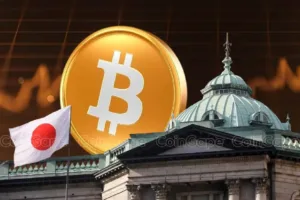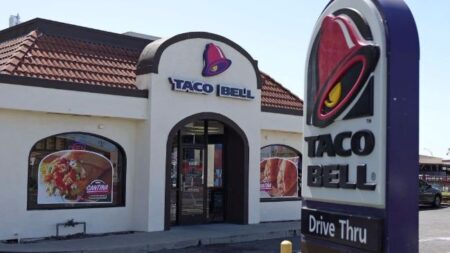One of the major breakout successes this year for the team behind layer-2 blockchain Polygon is Polymarket – the decentralized predictions market where users have flocked this year to place bets on everything from presidential politics to the conclusion of an HBO documentary.
What’s less clear to crypto analysts examining Polygon’s performance metrics is whether the coup will bring relief to holders of the project’s ailing tokens, down 65% this year.
Polymarket has soared in popularity among mainstream users, allowing them to make bets on the upcoming U.S. presidential election. Polymarket bettors have added nearly $2.4 billion on the question of whether Donald Trump or Kamala Harris will win the election in November. Bettors also recently made a market on whom a recently debuted HBO documentary about Bitcoin would attempt to identify as inventor Satoshi Nakamoto.
Polymarket is built on the Polygon PoS blockchain, and the application is one of the first major organic successes for the team – known for a past marketing strategy of paying partners like Starbucks to use the network.
So given the application’s boom in usage, why has it only produced a small amount in dollar figures for the Polygon team, and barely any bump in the price of the native POL token?
According to data from Token Terminal, as of Oct. 23, Polymarket has only brought in about $27,000 of transaction fees for Polygon PoS in 2024.
The answer, in part, is that the fees are market-based. And lately, transacting on Polygon PoS is extremely cheap.
The average transaction fee on the Polygon PoS chain on that same day was $0.007.
Anytime a Polymarket user makes a bet, they’re creating a transaction on Polygon PoS. As part of those transactions, they pay fees to Polygon PoS, which is split up into a base fee and a priority fee. The base fee does not go towards validators; instead it is burned – sent to a null address that theoretically should benefit tokenholders by helping to reduce the supply.
“That base fee is adjustable and it’s based off of network congestion,” Polygon Labs CEO Marc Boiron told CoinDesk in an interview. “So as the network gets more congested, that base fee increases.”
The priority fee is paid out to a validator.
“You’re paying the validator to say, Please include me in a block,” Boiron added. “The higher a fee you pay, the earlier the validator will include you in a block if there’s more congestion.”
If there’s ample blockspace, there’s less of a need to pay up.
Another issue is that, in the grand scheme of things, while Polymarket’s bettors are quite active, the volume of transactions doesn’t come close to the level of high-intensity applications like decentralized crypto exchanges (DEXs).
So far this month, 5.2% of transactions on the Polygon PoS chain came from Polymarket, according to Polygon’s research team. Chainlink makes up 10.38% of transactions on PoS, while transfers of the stablecoin USDT make up 4.89%.
Just to take the example of a recent day’s activity. On Oct. 23, Polymarket accounted for about 8% of the “gas” used on Polygon PoS, based on data from the blockchain explorer PolygonScan. That made it the largest individual contributor. In blockchain terminology, gas is a measure of the computational intensity required for any given batch of transactions.
“I look at how it’s built,” Boiron said. “I would never expect a lot of fees from Polymarket, because it doesn’t have a massive amount of composability, like Uniswap. It has some, but not a lot. It’s really just users coming there. They’re executing a transaction, and then stopping. So it’s inherently never going to drive that much until, like, the number of users goes way up.”
Attention is the reward
Polygon for long has looked for its mainstream breakthrough moment, pouring millions into the partnerships with Starbucks and Meta to try and bring Web3 to the masses. Those deals never really took off.
The Polygon team is encouraged by the enormous attention that Polymarket has been getting, hoping the attention will feed into bigger numbers in the wider Polygon ecosystem.
Boiron told CoinDesk: “The question is, like, why is Polymarket so interesting if they are only bringing $20K? The obvious reason is just, let’s call it attention.”
The success shows that “you can have an amazingly successful app on Polygon PoS that, like you can, you hardly even know that you’re using a blockchain,” he said.
To look on the bright side, “Paying only $20K in transaction fees, frankly, just reflects how cheap it is to use Polygon PoS,” Boiron said.
The organic explosion of Polymarket has contributed to Polygon’s success because of the attention it brings to the ecosystem, he said.
“Different applications have different roles,” Boiron said. “For me, Polymarket’s role includes: We’re giving them super cheap transactions that make it really easy. And attention is the thing – that is the value add – that Polymarket brings for us.”
“Now, that’s very different from, let’s say there’s somebody who comes and builds an order book DEX on Polygon PoS,” he said. “If they were doing $20,000 of fees over multiple months, it would be a massive failure, because you would expect massive numbers of orders placed and canceled and filled, then that would drive huge numbers of transactions. So the key here is like, different applications have different intended purposes.”
Read more: Polymarket Reportedly Seeks $50M in Funding, Mulls Token as Election Bets Surge
Read the full article here









